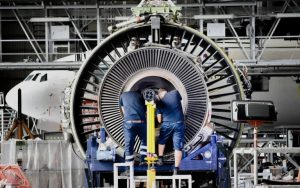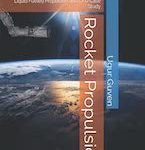One of the most significant inventions that probably changed the global landscape in a magnificent way was the invention of powered flight by the Wright Brothers in 1903. While the first original powered flight lasted for only 12 seconds; it opened up an era of travel and global expansion in the 20th century. Especially after the initial aviation boom of 1930’s, the aviation industry has shaped the world both politically as well as economically, and furthermore in 21st century, aviation has definitely become one of the top 3 influential industries in the world. Aviation industry can be considered as the backbone of the global economy since aviation encompasses not just the travel of individuals, but also the air transportation of goods and commodities across the world. Due to the aviation industry, the world has become a smaller place and it has become possible for any entrepreneur in India or anywhere else in the world to conduct business with any other country and sell his/her products or services. Moreover, families and friends have become closer to each other with distances becoming meaningless and people across the world have been able to explore various fascinating locations to help create a true global community of humanity. Especially countries like India and China have played a great role in the aviation boom of the 21st century, with the expansion of their economies as well as with the expansion of new airports and new aircrafts.
However, the arrival of SARS-CoV2- virus, which is the cause of the COVID19 Pandemic, has altered the global landscape and the global economy forever in various ways. Aviation industry, which has been the major backbone of the global economy and global travel, has suffered immense amounts of damage due to the COVID19 pandemic. Especially due to global lockdowns and travel restrictions across the world (including Schengen travel restrictions and USA travel restrictions) have made air travel impossible since mid of March and thousands of planes throughout the world have been grounded with no clear date of operation in sight. Though some local flights in China and USA remains, most flights across Europe, Asia, and Africa have been legally grounded and as a result, airlines have grounded their planes for weeks. Of course, one exception to this situation has been the international flights operated by governments to extradite their citizens from infected countries.

Figure 1: Coronavirus Effect on Airline Profits (Ref: Financial Times)
One of the primal factors of the aviation industry is that like a well-oiled machine, it has to be kept operational in order for it to be productively functional. Just like once you shut off a machine, it becomes difficult to turn it back on after several months (if it has not been maintained), this is doubly so for the concept of airplanes and airports. It’s an interesting fact known by Aerospace Engineers that a functional plane which is kept constantly flying is in a far better shape than a plane which has been grounded. Keeping a plane on the ground, requires extensive maintenance, engine overhaul, protective covering, and round the clock supervision. This means preserving the engines, removing all fluids, and getting everything covered in protective casing against outer elements such as the weather and birds. In addition, their wheels need to be rotated regularly and their engines have to be kept dry with silica moisture absorbents. Hence, in a way, this is even more debilitating for airlines, as an efficient and economically viable airlines always try to keep all of its airplanes flying and this is why global airlines such as Lufthansa and Emirates in the past were so successful in their profitability.
Many aviation analysts agree that this is the worst aviation crisis that the aviation industry has faced since its inception. According to industry research organization Cirium, more then 16,000 planes are grounded worldwide and many major airports across the world have become parking lots to these planes. Besides the huge maintenance costs of airplanes on the ground, airlines also have to pay for parking of each plane on a long term and these charges can depend on the country as well as the airport. For example, in India, airlines for each wide-body aircraft have to pay approximately $1000 per day (roughly 75,000 Rs per day) and if you can imagine 100 days or longer duration of grounding for many long range aircraft such as Boeing 777-300; it is possible to see how fast it can add up for a single widebody aircraft. (7.5 Million Rupees per 1 wide-body aircraft/100 days). (Ref: Bloomberg) For 100 wide-body aircraft stored for 100 days, this would add up to very large amounts that would be impossible for any airline to bear on its own. If you also add maintenance costs described above to this parking cost, you can quickly see that airlines across the world are losing money excessively and it is not something that can be maintained for any period of time, especially since globally we don’t know when will the COVID19 outbreak be fully extinguished. Even though the peak point seems to have been reached in many countries, many analysts agree that our lifestyles won’t turn pack to pre-COVID19 era immediately and that global aviation will take 2 to 6 years to recover to its 2019 metrics.

Figure 2: Grounded Airplanes (Ref: Deutsche Welle)
Besides the airlines, the losses to aircraft manufacturers such as Boeing and Airbus is also going to be immense, especially for Boeing, as it was already facing lot of grounded aircraft due to its issues in Boeing 737 Max aircraft, which caused all Boeing 737 Max aircraft to be grounded in the world since March 2019. Coupled with the COVID19 troubles, many industry experts suggest that Boeing will need a large bailout from US Government to survive and already some subsidy funding has been supplied to Boeing by the government. While Airbus seems to be in better economical shape; the overall effect of the COVID19 pandemic on European economies have been devastating in general. Besides aircraft manufacturers, airport authorities are also facing critical times, since many airports across the world are in a state of zero income (except for those designated as holding spaces for aircraft as described above) and even nonoperational airports have many operational maintenance expenses to keep them certified for landing of airplanes in the future. Overall, IATA estimates that the loss to the aviation sector will total around 1 trillion dollars.(Ref: IATA)
However, regardless of all the negative outlook parameters; it must be stated that aviation industry will continue to be the backbone of global economy and global growth. We must never forget that the aviation industry brings us together no matter where we are in the world and aviation makes everything possible from commerce to tourism to sports and to education in a world where everything and everyone is connected with each other. Aviation faced many crises before such as the 1929 depression, September 11 Terrorist Attack, 2008 Global Recession and even the 2002 SARS outbreak, which had also affected the number of passengers flying due to health concerns.
Eventually, after each crisis, aviation industry always came back globally stronger than before and it is expected that eventually this crisis will cause the aviation industry to be far stronger than before. Of course, this will mean that some smaller airlines may be going bankrupt or that they may have to conglomerate with bigger airlines. Naturally, many governments will be providing support and subsidy to the larger airlines to help put them back in financial health similar to German Government giving support to Lufthansa or the US Government giving a similar support to Delta Airlines. Even the manufacturers of airplanes and parts will have to rechange their thinking with a new paradigm and there may be some changes to make the aviation industry become more productive as a result. However, in 5 years, aviation industry in its changed form will be more powerful than before and with the upcoming advances in the Aerospace sector, we may also soon see aviation industry taking a turn for more advanced opportunities in the next 5-10 years. There are exciting developments such as inception of new supersonic aircraft similar to Concorde of the 80’s, so that travel from one continent to other will be matter of minutes. Space tourism is growing bigger than before with the aid of the private sector and simple Low Earth Orbit flights by private companies may become commonplace like international flights in the next decade.
In a way, aviation and aerospace is still the future of our world, and thus the demand for professionals will be at an all-time high in the next 5-10 years. The progress of humanity has never been stopped due to any catastrophe, as progress has continued regardless of obstacles and aviation will not be an exception as well. In many ways aviation and aerospace symbolizes the hope and the positivity of the future of humanity and as long as humanity is alive, both the aviation and the aerospace sector will continue to grow beyond our dreams.
Prof. Dr. Ugur GUVEN
Advisory Council – UN CSSTEAP


























